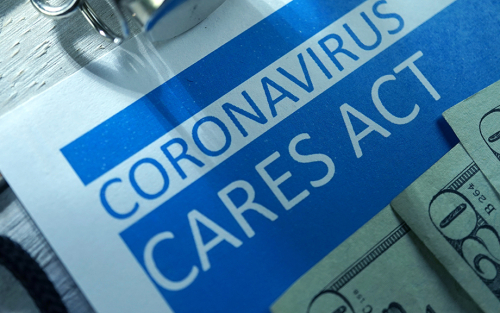How Have Households Used Their Stimulus Payments and How Would They Spend the Next?

In this post, we examine how households used economic impact payments, a large component of the CARES Act signed into law on March 27 that directed stimulus payments to many Americans to help offset the economic fallout from the coronavirus pandemic. An important question in evaluating how much this part of the CARES Act stimulated the economy concerns what share of these payments households used for consumption— what economists call the marginal propensity to consume (MPC). There also is interest in learning the extent to which the payments contributed to the sharp increase in the U.S. personal saving rate during the early months of the pandemic. We find in this analysis that as of the end of June 2020, a relatively small share of stimulus payments, 29 percent, was used for consumption, with 36 percent saved and 35 percent used to pay down debt. Reported expected uses for a potential second stimulus payment suggest an even smaller MPC, with households expecting to use more of the funds to pay down their debts. We find similarly small estimated average consumption out of unemployment insurance (UI) payments, but with somewhat larger shares of these funds used to pay down debt.
The Disproportionate Effects of COVID‑19 on Households with Children

A growing body of evidence (here, here, and here) points to large negative economic and health impacts of the COVID-19 pandemic on low-income, Black, and Hispanic Americans. Beyond the consequences of school cancellations and lost social interactions, there exists considerable concern about the long-lasting effects of economic hardship on children. In this post, we assess the extent of the underlying economic and financial strain faced by households with children living at home, using newly collected data from the monthly Survey of Consumer Expectations (SCE).
Inflation Expectations in Times of COVID‑19

As an important driver of the inflation process, inflation expectations must be monitored closely by policymakers to ensure they remain consistent with long-term monetary policy objectives. In particular, if inflation expectations start drifting away from the central bank’s objective, they could become permanently “un-anchored” in the long run. Because the COVID-19 pandemic is a crisis unlike any other, its impact on short- and medium-term inflation has been challenging to predict. In this post, we summarize the results of our forthcoming paper that makes use of the Survey of Consumer Expectations (SCE) to study how the COVID-19 outbreak has affected the public’s inflation expectations. We find that, so far, households’ inflation expectations have not exhibited a consistent upward or downward trend since the emergence of the COVID-19 pandemic. However, the data reveal unprecedented increases in individual uncertainty—and disagreement across respondents—about future inflation outcomes. Close monitoring of these measures is warranted because elevated levels may signal a risk of inflation expectations becoming unanchored.
How Widespread Is the Impact of the COVID‑19 Outbreak on Consumer Expectations?

In a recent blog post, we showed that consumer expectations worsened sharply through March, as the COVID-19 epidemic spread and affected a growing part of the U.S. population. In this post, we document how much of this deterioration can be directly attributed to the coronavirus outbreak. We then explore how the effect of the outbreak has varied over time and across demographic groups.
Coronavirus Outbreak Sends Consumer Expectations Plummeting
The March Survey of Consumer Expectations, which was fielded between March 2 and 31, records a substantial deterioration in financial and economic expectations, including sharp declines in household income and spending growth expectations.










 RSS Feed
RSS Feed Follow Liberty Street Economics
Follow Liberty Street Economics